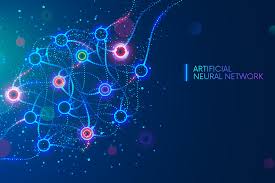Neural networks have revolutionized the field of artificial intelligence, enabling machines to learn complex patterns and make decisions in a way that mimics the human brain. One powerful type of neural network is the Feedforward Neural Network (FNN), which is widely used in various applications such as image recognition, natural language processing, and financial forecasting.
The FNN consists of multiple layers of interconnected nodes, with each node performing a simple mathematical operation on its input data and passing the result to the next layer. The network is “feedforward” because the data flows in one direction, from input nodes through hidden layers to output nodes, without any feedback loops.
One key feature of FNNs is their ability to learn complex patterns and relationships in data through a process called training. During training, the network adjusts its internal parameters based on a set of input-output pairs, gradually improving its ability to make accurate predictions or classifications.
In financial applications, FNNs are often used for tasks such as stock price prediction, risk assessment, and algorithmic trading. By analyzing historical market data and identifying patterns that human analysts may overlook, FNNs can help investors make more informed decisions and optimize their trading strategies.
Overall, FNNs represent a powerful tool in the realm of artificial intelligence, offering a versatile framework for solving a wide range of complex problems. As researchers continue to explore new architectures and training techniques, the potential applications of FNNs are only expected to grow in the future.
Understanding Feedforward Neural Networks: Key Concepts and Applications
- What is a Feedforward Neural Network (FNN)?
- How does a Feedforward Neural Network work?
- What are the key features of a Feedforward Neural Network?
- In what applications are Feedforward Neural Networks commonly used?
- How is training conducted in a Feedforward Neural Network?
What is a Feedforward Neural Network (FNN)?
A Feedforward Neural Network (FNN) is a type of artificial neural network where information flows in one direction, from input nodes through hidden layers to output nodes, without any feedback loops. This architecture allows the network to learn complex patterns and relationships in data through a process called training, where internal parameters are adjusted based on input-output pairs. FNNs are widely used in various applications such as image recognition, natural language processing, and financial forecasting due to their ability to make decisions that mimic the human brain’s functioning.
How does a Feedforward Neural Network work?
A Feedforward Neural Network (FNN) operates by processing data through multiple layers of interconnected nodes, where each node performs a mathematical operation on the input data and passes the result to the next layer without any feedback loops. The data flows in a forward direction, from input nodes through hidden layers to output nodes. During training, the network adjusts its internal parameters based on input-output pairs, allowing it to learn complex patterns and relationships in the data. This iterative process of adjusting parameters helps the FNN improve its ability to make accurate predictions or classifications, making it a powerful tool for various applications such as image recognition, natural language processing, and financial forecasting.
What are the key features of a Feedforward Neural Network?
A Feedforward Neural Network (FNN) is characterized by several key features that make it a powerful tool in artificial intelligence. One important feature is its layered structure, consisting of input nodes, hidden layers, and output nodes through which data flows in a forward direction without feedback loops. Additionally, FNNs are known for their ability to learn complex patterns and relationships in data through training, where the network adjusts its internal parameters to improve its predictive capabilities. Another key feature is the use of activation functions at each node, which introduce non-linearity into the network and enable it to model more sophisticated relationships in the data. Overall, these key features combine to make FNNs effective for tasks such as pattern recognition, classification, and prediction in various domains.
In what applications are Feedforward Neural Networks commonly used?
Feedforward Neural Networks (FNNs) are commonly used in a wide range of applications across various fields. In the realm of image and speech recognition, FNNs play a crucial role in accurately identifying and classifying patterns within visual and auditory data. In natural language processing, FNNs are utilized for tasks such as sentiment analysis, language translation, and text generation. Additionally, FNNs are widely applied in financial forecasting for tasks like stock price prediction and risk assessment. Overall, the versatility and effectiveness of FNNs make them a popular choice for solving complex problems in artificial intelligence and machine learning.
How is training conducted in a Feedforward Neural Network?
Training in a Feedforward Neural Network involves adjusting the network’s internal parameters to minimize the difference between the predicted output and the actual output for a given set of input data. This process typically begins with initializing the network’s weights and biases randomly and then feeding forward the input data through the network to generate an output. The network’s performance is evaluated using a loss function, which quantifies how well the predicted output matches the actual output. Through backpropagation, which calculates the gradient of the loss function with respect to each parameter, the network updates its weights and biases using optimization algorithms like gradient descent. This iterative process is repeated over multiple epochs until the network converges to a set of parameters that produce accurate predictions on unseen data.



